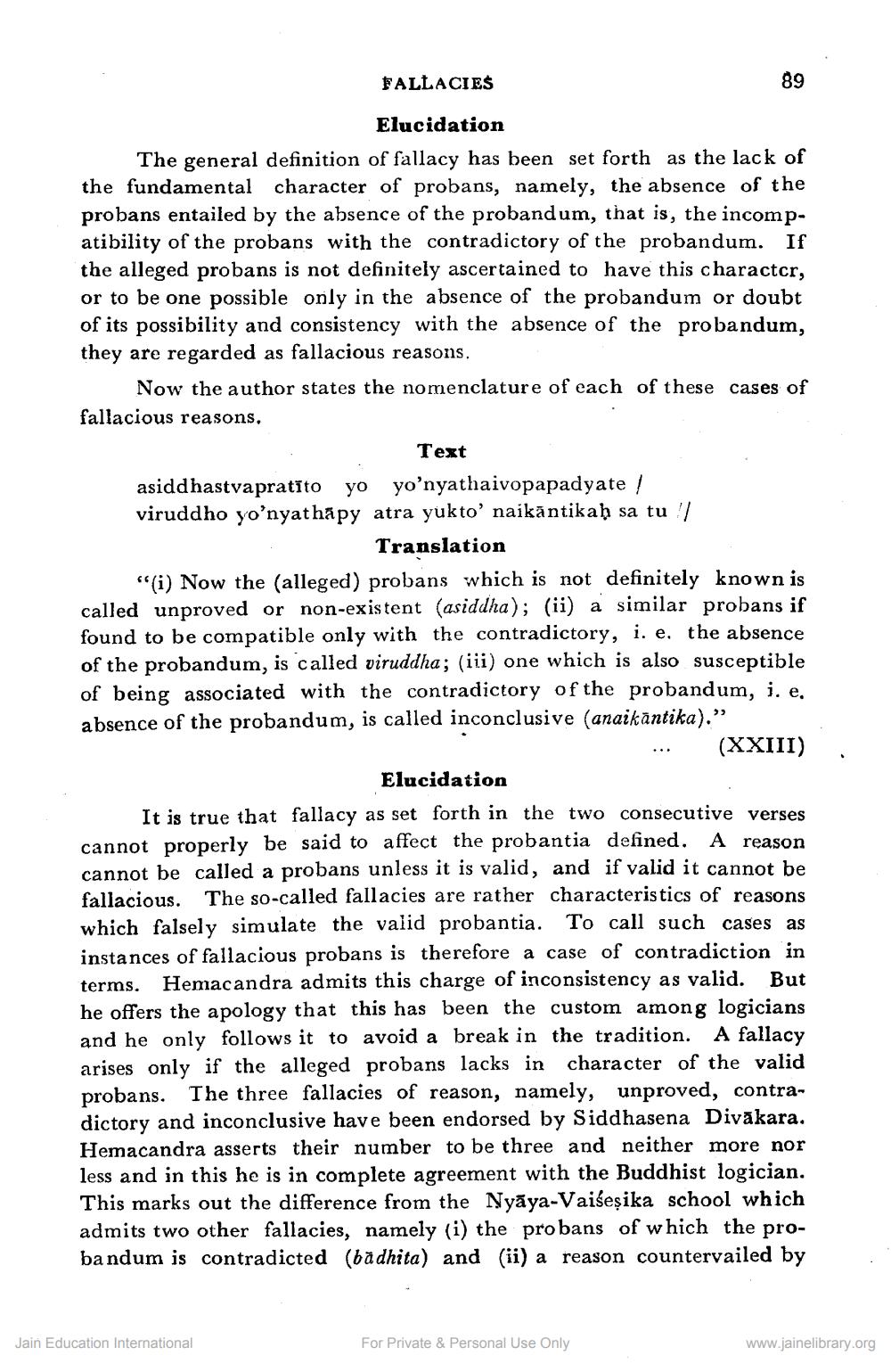________________
FALLACIES
Elucidation
The general definition of fallacy has been set forth as the lack of the fundamental character of probans, namely, the absence of the probans entailed by the absence of the probandum, that is, the incompatibility of the probans with the contradictory of the probandum. If the alleged probans is not definitely ascertained to have this character, or to be one possible only in the absence of the probandum or doubt of its possibility and consistency with the absence of the probandum, they are regarded as fallacious reasons.
Now the author states the nomenclature of each of these cases of fallacious reasons.
Text
asiddhastvapratīto yo yo'nyathaivopapadyate / viruddho yo'nyathapy atra yukto' naikāntikaḥ sa tu !/
Translation
89
"(i) Now the (alleged) probans which is not definitely known is called unproved or non-existent (asiddha); (ii) a similar probans if found to be compatible only with the contradictory, i. e. the absence of the probandum, is called viruddha; (iii) one which is also susceptible of being associated with the contradictory of the probandum, i. e. absence of the probandum, is called inconclusive (anaikantika)."
(XXIII)
Jain Education International
Elucidation
terms.
It is true that fallacy as set forth in the two consecutive verses A reason cannot properly be said to affect the probantia defined. cannot be called a probans unless it is valid, and if valid it cannot be fallacious. The so-called fallacies are rather characteristics of reasons which falsely simulate the valid probantia. To call such cases as instances of fallacious probans is therefore a case of contradiction in But Hemacandra admits this charge of inconsistency as valid. he offers the apology that this has been the custom among logicians and he only follows it to avoid a break in the tradition. A fallacy arises only if the alleged probans lacks in character of the valid probans. The three fallacies of reason, namely, unproved, contradictory and inconclusive have been endorsed by Siddhasena Divākara. Hemacandra asserts their number to be three and neither more nor less and in this he is in complete agreement with the Buddhist logician. This marks out the difference from the Nyaya-Vaiśeṣika school which admits two other fallacies, namely (i) the probans of which the probandum is contradicted (badhita) and (ii) a reason countervailed by
For Private & Personal Use Only
www.jainelibrary.org




